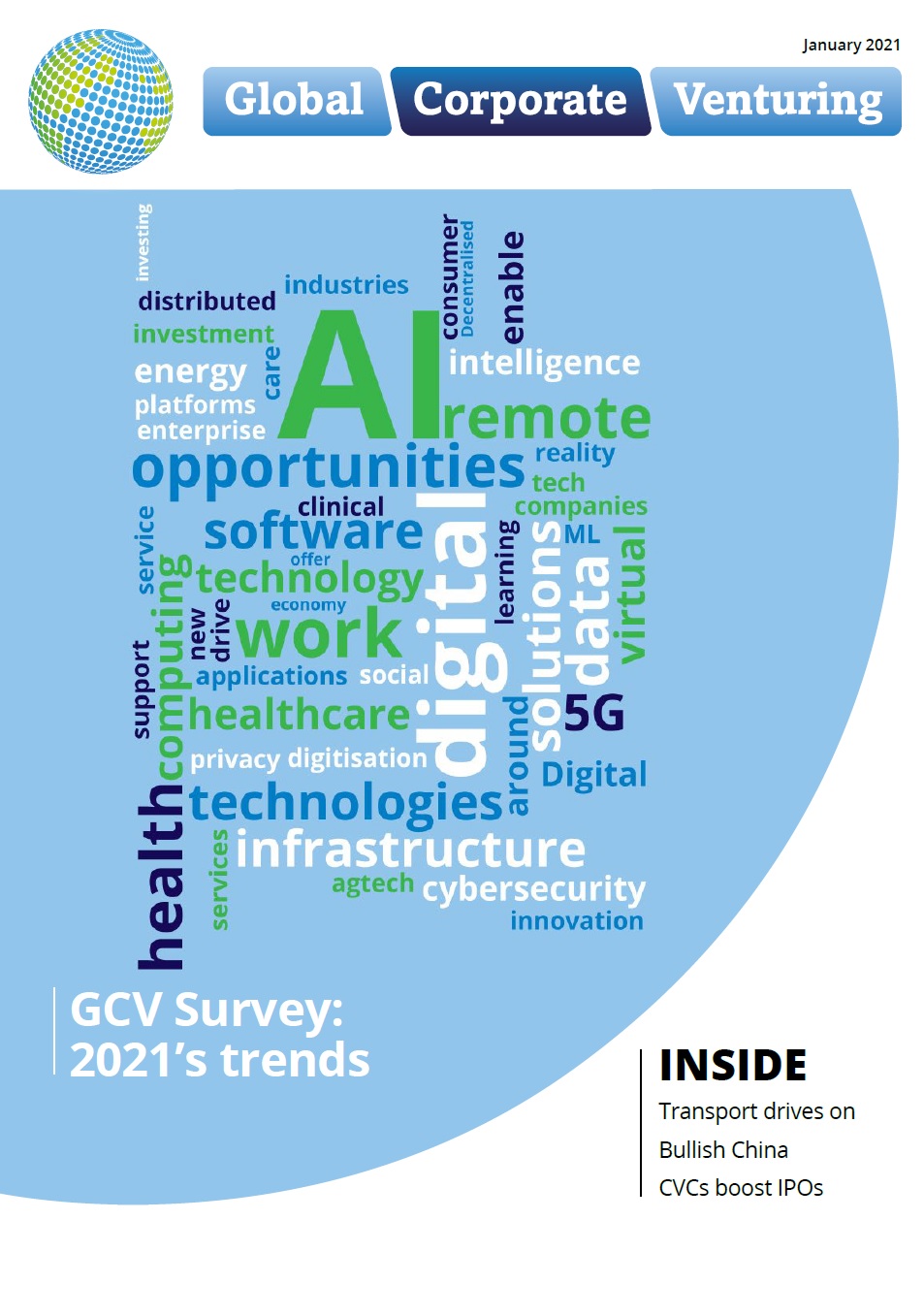GCV January 2021 issue editorial by James Mawson, editor in chief, Global Corporate Venturing
It is always good to get the insights from The Economist’s World in 2021 report, even if the paper acknowledges JK Galbraith’s wisdom that forecasting is a job for those who do not know or do not know they do not know.
If oil prices and the economy bounce back and inflation lifts then it could be a hot year for those prepared to invest heavily.
Regardless of the shorter-term gyrations, it is good to see financial markets catching up to the “rise of intangible assets, which now account for over a third of all American business investment – think of data, or research”.
Accountants treat these costs ($700bn to $1.5 trillion) as an expense, rather than an investment that creates an asset and many miss that these firms can scale up quickly and exploit network effects to sustain high profits, as The Economist noted.
This means the gap between successful and laggard firms will only grow this year unless innovation venturing can help those being left behind.
What is exciting is stock market investors are finally catching up to this. As Cathie Wood, founder of Ark, in a Financial Times article in December said: “Any company not investing aggressively in one or more of five major platforms of innovation will lose its way. In harm’s way are companies that have engineered their financial results to satisfy the short-term demands of short-sighted investors.
“Those that have leveraged their balance sheets to buy back shares and pay dividends are at particular risk as they will have less balance sheet flexibility to invest in response to the technological shift.
“Seeded during the tech and telecom bubble more than 20 years ago, the five main platforms of innovation that we think will transform the global economy are: DNA sequencing, robotics, energy storage, artificial intelligence (AI) and blockchain technology.”
You might quibble with the platforms Ark has identified – GCV’s news editor, Robert Lavine, has identified areas to watch in his preview of the year here – but change is definitely coming.
It is, however, hard to put into context how much is coming this decade. Last year’s covid-19 pandemic saw unprecedented amounts of public funding to support people and economies while university scientists, startups and corporations led in identifying the coronavirus, developing novel vaccines. Particularly exciting was the use of messenger RNA to develop a response, and scaling up manufacturing.
In one sense it was achieved in record time. Developing a vaccine in a year is extraordinary. But, of course, the intellectual breakthroughs by Moderna, BioNTech, the University of Oxford and the corporations often took decades
to prepare.
What is exciting is the abundance of capital now available to startups and innovators. From tens of billions of dollars in the 2000s to hundreds of billions each year in the late 2010s.
Given the blurring of public and private capital markets now underway as investors chase growth from innovation to drive the equity and, hence borrowing opportunities, the capital could potentially soon be in the trillions of dollars.
This superabundance of capital effectively means we are in a world where missions or objectives becomes critical. How does the narrative or story develop to require buy-in from enough stakeholders to unlock the capital and interest in making the change happen?
Whether batteries and electric vehicles for climate change (see this month’s sector on transport and the latest Global Energy Council quarterly report), bitcoin as a form of non-fiat capital or developing AI and quantum computing to solve pressing health and other needs, the story is vital.
Too few corporate venturers have thought enough about their marketing strategies and positioning.
It has been enough to talk internally about meeting strategic and financial needs of the parent corporation and think through their advantages in supporting entrepreneurs’ main needs for capital, customers, product development, hiring, regulatory support and an exit.
But as the playing field levels as the best VCs start to offer similar support the ability to unlock the larger capital amounts, as shown by, say, SoftBank or Tencent, creates a competitive advantage.
Amazon, Alphabet and Samsung are among those who grasp the power of the message and using societal interests to develop the stakeholders to scale up new businesses.
The broader industry has answered one question in the past year: whether as a whole it can continue to support innovation through an economic crisis (supported by a roaring stock market in the second half of the year). That about a thousand active CVCs were effectively shuttered last year as parent corporations closed off funding to “satisfy the short-term demands of short-sighted investors”, as Wood put it, indicates the issues many will face.
As Francis Bacon, the 17th century father of empiricism, said: “Everyone is the maker of their own fortune”.
At such a crucial time for the industry, GCV is pleased to release its annual World of Corporate Venturing report, full of data, analysis and opinion on January 26.
GCV is also hosting the Digital Forum on January 27, on a comprehensive virtual platform provided by Brella as part of a week-long celebration of the GCV Rising Stars and Emerging Leaders award winners.
Register now at gcvdigitalforum.com










